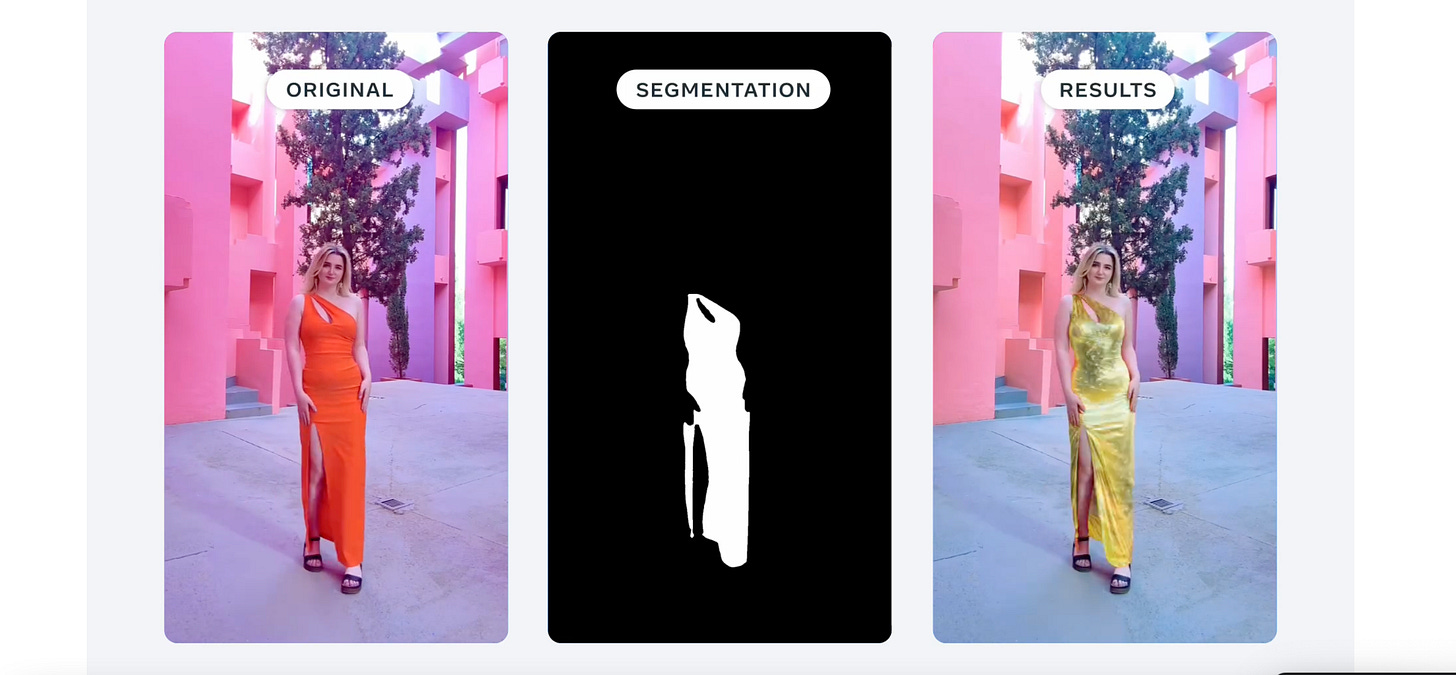AR Cannibalized by AI
AI has swallowed up the augmented reality industry whole in just two years
My estimate is around 75% of the folks that I knew in augmented reality (AR) have transitioned to artificial intelligence (AI) organizations or divisions in the past two years. Why is this happening?
Let’s go through an example of trying on clothing with AR. An AR shopping experience used to involve creation of 3D assets by a creative or technical artist. The 3D asset had logic for repositioning in real-time as the user moved around. A developer was responsible for this second portion. AR clothing try-on and AR filters led to increased product purchases.
It was effective and interactive marketing. A year and a half ago, Meta announced a new AR ad format. A year ago, the AR ads were cancelled. Why would something that worked well and required years of community building be cancelled?
Let’s compare AR clothing try-on with AI clothing try-on. A static image of the person is uploaded. Algorithms are then used to blend the clothing item onto the image with the user. This process uses less computing resources (50-70%). It also doesn’t require anyone to build a 3D asset or rig it. Rigging is the creation of a skeleton for the 3D asset.
Generative AI clothing try-on costs less to make, looks better and requires less computational resources relative to traditional AR.
Fashion and entertainment industry marketers are two of the most technology forward groups. Many AR studios and independent creators were indirectly sustained through AR marketing experiences serving the fashion and entertainment industry. That lifeline is gone. Along with it, nascent AR gaming studios have lost a core source of revenue through consulting projects.
What happened to the talent that was in AR?
First the product professionals (engineers and product managers) moved to AI because there were more resources and jobs. This started roughly two years ago.
The AR distribution professionals (marketing, community and developer relations professionals) moved to AI after the new AI products needed users. This AR to AI distribution professional migration started last year.
Finally the distribution professionals reached out to early adopters of AR to use the new tools. This is happening as we speak. Below is an early AR adopter that has since been pulled to create demos for new AI tooling.
Here’s my guess on what will happen this year. Generative AI for creative use cases will proliferate. The different generative AI teams will ramp up resources for their distribution teams.
These distribution teams will ramp out reaching out to early technology adopters. A large portion of these early adopters will be former AR creators. This is because the distribution teams in AR divisions have transitioned to work in AI. The first people they will reach out to are people they used to know in AR.
The AR ecosystem top to bottom has been swallowed whole by generative AI. I’m still interested in AR. But if you are wondering I am writing less about AR, now you have your answer. There’s simply less to write about because there are less people working on AR.
The AR industry has been cannibalized by the AI wave for the time being. It’s not the first industry impacted and it won’t be the last.
Share with anyone that you believe would enjoy reading this article.
If you are not subscribed to Games of Strategy, subscribe below.
Descriptions of Images
Image One: Flair AI
Image Two: Lens Studio Garment Texturing
Image Three: Josephine Miller using Meta’s Segment Anything 2 Model





